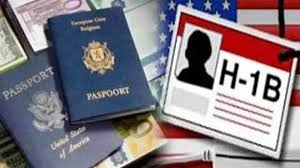
H-1B Visa Workers: Overpaid Or Underpaid!
By Nick Kolakowski
Are H-1B workers underpaid, or does their compensation match industry standards? That’s a key question debated by the Economic Policy Institute and the Cato Institute, both of which have done deep dives into H-1B salaries over the past several weeks.
The Economic Policy Institute issued a lengthy report at the beginning of May that insisted the Department of Labor (DOL) allows employers to undercut local wages via the H-1B. “Among the top 30 H-1B employers are major U.S. firms including Amazon, Microsoft, Walmart, Google, Apple, and Facebook,” the group wrote. “All of them take advantage of program rules in order to legally pay many of their H-1B workers below the local median wage for the jobs they fill.”
The issues with H-1B pay, the report continues, stem from DOL policies regarding H-1B minimum wage levels. Although DOL has broad authority to set four H-1B levels, based on wage survey data form the Bureau of Labor Statistics’ Occupational Employment Statistics survey, it has chosen to “set the two lowest levels (of the four) well below the local median wage.”
That decision has a ripple effect, with employers “taking advantage of a flawed H-1B prevailing wage rule to underpay their workers relative to market wage standards.” The Economic Policy Institute also questions whether the top 30 H-1B employers “use the program solely, or even mostly, to hire workers with truly specialized skills,” which is the visa’s stated intent.
The report’s analysis found that, for computer applications, salaries are 17 percent to 34 percent lower than local median salaries. Overall, “three-fifths of all H-1B jobs were certified at the two lowest prevailing wage levels in 2019,” with Amazon and Microsoft assigning 75 percent (or more) of their H-1B positions to these levels. Walmart, Uber, and Google assigned roughly half to either of these two levels, while IBM assigned three-fifths.
“There is a large existing U.S. labor pool for Level 1 and 2 types of positions that could be expanded even further through private investments in training,” the Economic Policy Institute states as part of its conclusions. “U.S. citizens and lawful permanent residents have been graduating in record numbers with bachelor’s degrees in computer science and engineering over the past five years.”
Membership has its benefits. Sign up for a free Dice profile, add your resume, discover great career insights and set your tech career in motion.
Two weeks after the Economic Policy Institute’s report, the Cato Institute pushed back with an analysis of its own. “EPI confuses the median wage—the statistical midpoint in the entire range of market wages—for the singular ‘market wage,’” read its report. “A market wage is just whatever an employer would pay a worker in an open market—which depends entirely on the characteristics of the job and the productivity of the worker.”
Crunching the numbers itself, the Cato Institute insists that 78 percent of H-1B employers “offer wages, on average, above average market wages—20 percent above” and that “the vast majority of H-1B employers pay at least some employees more than they are required to pay.”
In other words, although the Economic Policy Institute suggests that the nation’s largest tech companies are assigning numerous H-1B workers to the two lowest pay levels, the Cato Institute believes the average pay for H-1B workers at those firms is nonetheless quite high: “For major companies like those EPI calls out in its report—such as Microsoft, Amazon, and Google—the average increases over the prevailing wage were substantial: 17 percent for Microsoft, 19 percent for Ama?zon?.com Services, and 64 percent for Google.”
According to the Cato Institute, the DOL data also shows that many companies are also paying H-1B workers in those lower pay levels “the prevailing market wage for U.S. workers at the workers’ skill levels in 2019,” with many workers paid higher than the prevailing wage. It backs up these assertions with some charts that are well worth reviewing.
“If employers carried out EPI’s recommendation, it would result in H-?1Bs being paid far more than comparably skilled U.S. workers in the same occupation,” the Cato Institute concluded. “Obviously, this is an untenable result, and instead, the policy would effectively ban hiring nearly all H-1B workers.”
Which side is right? The Cato Institute has some strong words for the Economic Policy Institute’s analysis, branding some of its assertions “false.” As with many reports of this type, it all comes down to the underlying analytical model, including which inputs and outputs to focus on. If you’re curious about H-1B wages and their impact on the broader economy (and tech), both reports are well worth reading back-to-back.
